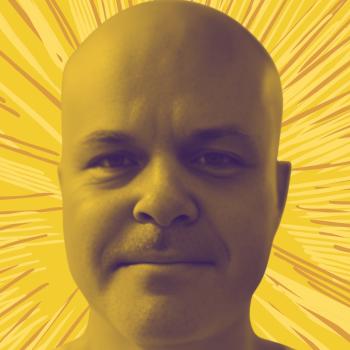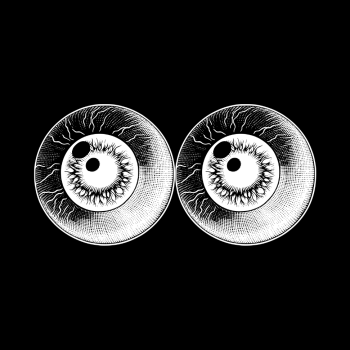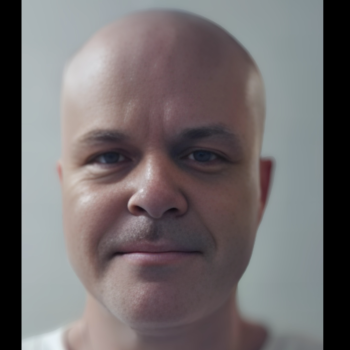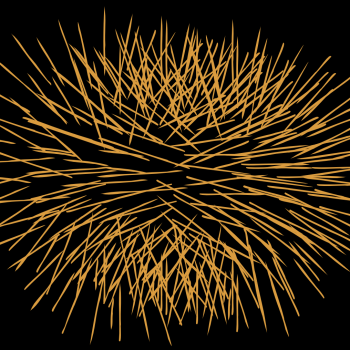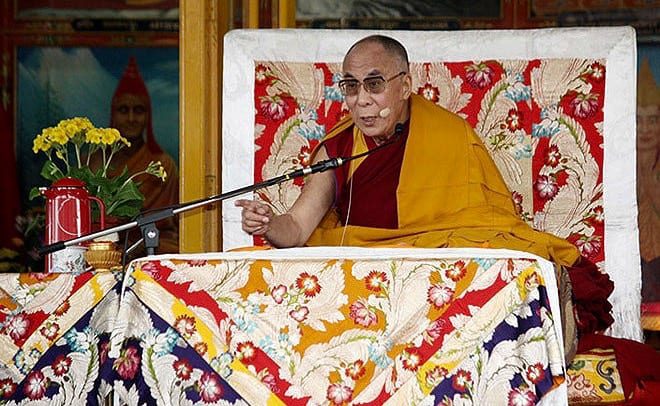
What does the Dalai Lama offer us now?
The Dalai Lama: Traditionalist or Modernist
The Dalai Lama represents a tradition existent since 1391. This tradition is intensely religious and highly irrational based on modern conceptions of logic and rationality. Any belief in reincarnation is certainly not a modern construct and challenges modern notions of what is logical. Religion is not a modern construct. Enlightenment sensibilities have ushered in a time of philosophical skepticism and aversion to belief in the religious or miraculous that has only grown with time. Industrialization places a premium on the human ability to usher in modern progress. The Dalai Lama teaches that progress can only come through traditional virtues of love, compassion and sacrifice. There are two reasons for these competing constructs…the Dalai Lama is a product and beneficiary of a beautiful tradition yet his existential realities have required him to engage the modern world.
The Dalai Lama experienced an incredibly unique early life that shaped much of who he has become. Taken from his home at the age of two, raised by Buddhist monks in a palace, trained to be amongst the most intellectually capable Buddhists in the world, molded by a chance encounter with a westerner of unique intellectual charisma, supported by the military might of major western industrial powers and finally forced to leave his home by an invasion of communists. The Dalai Lama has experienced both tradition and modernity in ways that perhaps only creative novelists could dream of.
The forces of tradition have shaped the Dalai Lama simply by the nature of his position. He has accepted that he is, and is considered by his followers to be, the complete embodiment of the Buddha’s compassion. This is not a construct that will past muster with modern secular and rational forces. Yet, the Dalai Lama was taught how to speak to the outside world with the help of Heinrich Heller and has also become a prophet for compassion the world over. Do all of those who read the Dalai Lama’s books and treasure him as a modern sage accept that he is the embodiment of the Buddha’s compassion? Certainly not, but they do believe him to be something incredibly special, as has been evidenced by his unending beatification around the world.
The Dalai Lama was unquestionably shaped by the numerous conflicts between Tibet and China. The early support of the CIA made the Dalai Lama the beneficiary of a modern economics and governance. His fights against the communist forces of China also made him an early hero of anti-communist capitalists around the world. These factors gave him a large space from which to speak about peace and compassion. Had the Dalai Lama been some type of religious communist, I doubt that he would have had the same international platform from which to speak. History has always rewarded winners and, it does not seem to be the least bit strange, the Dalai Lama was rewarded the Nobel Peace Prize just as the Soviet Union was beginning to collapse in 1989. To make it plain…the Dalai Lama ended up on the right side of history and has reaped the benefits of his fortune.
Religion is often seen as a hindrance or the antithesis of modernity, most often due to the value it places on the irrational and the miraculous. Tradition is the backbone of religion and modernity has requested a death to many traditional assumptions. These facts seem to point to a death or at the very least a decrease in the popularity of the tradition of the Dalai Lama. This has not been the case, and, perhaps, speaks to some of modernity’s failures.
Modernity has championed secularization, rationality and industry as the chief ends of man. Modernity’s promotion of reason as the means to deeper understandings of science, technology and the universe has often come at the detriment of religious explanations. In the midst of these great leaps of progress, weapons of incredible destruction and impersonal economic systems have been created objects that have reaped massive destruction on human communities. The rejection of faith as blind and irrational, has led to a deep displacement of religious contentment in favor of a consumption. Time has led to the failure of modernity to provide happiness or contentment lasting beyond one’s contemporary situation. In the midst of such failure, persons have sought out contentment and happiness that is lasting. For many, the simple traditional teachings of the Dalai Lama produce a source of comfort and direction in the midst of modern disorientation.
His Holiness has met both tradition and modernity and somehow become and spoken to both. Indeed, the Dalai Lama has met and conducted himself as both traditional guru and modern sage, making it difficult to categorize him as either. Maybe that’s the point…his importance lies not in these categories but, rather, in his ability to provide prophetic words of encouragement to hold fast to that which is truly human in the midst of a modernity that seems to have stolen that which is humane. The Dalai Lama has become who he is, perhaps neither modernist nor traditionalist, because he is, indeed, a part of all that he has met. This is a model of resistance that we can all follow.
Amen.
Sources/Further Info
Chhaya, Mayank. Dalai Lama: Man, Monk, Mystic. New York: Random House, 2007. Pp. 88-311.
Heelas, Paul. Religion, Modernity, and Postmodernity. Oxford, UK: Blackwell Publishing, 1999. Pp. 1-87.
Knauss, John Kenneth. Orphans of the Cold War: The United States and the Tibetan Struggle for Survival. New York: PublicAffairs Publishing, 1999.
Levenson, Claude B. and Stephen Cox. The Dalai Lama: A Biography. Oxford, Oxford University Press, 2004. Pp. 100-320.




